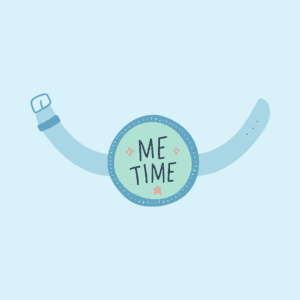While the ELL population is growing by leaps and bounds within US public schools, most school counselors don’t receive any sort of specialized training in how to work with these students or their families. School counseling with ELL students isn’t hugely different or difficult but there are certainly some tips, tricks, and best practices that I’ve discovered.
I work in a preK to fourth-grade elementary school in the southeast. Around 40% of my students are English Language Learners and even more come from non-English language backgrounds. Spanish and Arabic are the two main languages spoken by my ELL families. The number of Swahili-speaking families (as well as other African languages) is growing, and I always have some East Asian students too.
Most of my ELL students are second generation Americans though I have many that moved to the US as toddlers. I had zero training, information, or experience working with ELL students or families before my first school counseling position. I’ve learned so much from them and despite the many challenges (including my lack of other language skills!), I’ve really enjoyed it. Here are some of the strategies I’ve learned to help me be more effective in this role.
Less Metaphors, More Concrete Ideas and Examples
Counseling stories and techniques are full of beautiful metaphors but unfortunately, those are very tricky for people who aren’t yet proficient in the language of the metaphor. This is important when selecting books to use in class lessons or counseling sessions.
For example, when I teach about empathy and use the book “Stand in My Shoes”, I have to be very explicit about what the metaphor means. We go through specific examples of pretending to “stand” in a student’s shoes and explaining that I wouldn’t actually walk in their shoes. I would think about what it’s like to be 7, to speak Spanish at home, to have a little sister, etc. Much of the time, I skip metaphors altogether.
Representation Matters
My students need to know that I see them and that I value what they bring to our school. When I look through the books I plan to use throughout the year, I look at the characters. Do they match my students in terms of race and ethnicity or are they all white? When I’m writing scenarios for different activities, I make sure to include common/popular Egyptian and Central American names, alongside common names representing the other groups at my school.
Prioritize Your Relationships with Your Translator(s)
I don’t speak any other languages and have had to rely heavily on my schools’ part-time translators. They do more than just translate my letters and interpret during meetings. They form connections with the families and become community liaisons. My translators know me and trust me which means they share important information with me about the families. It also means they tell the families they can trust me which is incredibly meaningful and powerful.
One thing I didn’t know before working with a translator was that I should face the family and speak directly to them — not the translator. The first time or two of doing this feels a bit awkward but it’s more polite to be direct. Also, there is so much we convey in tone and body language!
Be Ready to Talk About Immigration and Deportation
Many of my students and their parents are in fear of a parent being deported. This means anxiety over smaller things like a parent getting pulled over while speeding as well. Deportation has a loss like death paired with some of the shame of prison — and it comes with the financial ramifications of both. It’s also important to be thoughtful about your language; undocumented or without papers are far more appropriate and compassionate than illegal. I also recommend having resources on hand to share with parents about legal representation, health care for the uninsured, etc.
Visuals, Visuals, Visuals!
I try to incorporate visuals into everything I do. I don’t just talk about the conflict escalator, I show them a picture of an escalator. I don’t just read prompts aloud, I project them and include clipart graphics too.
Sometimes visuals can also come in the form of picture book read alouds, or with role plays. I often use animated PowerPoints when talking about big concepts like T.H.I.N.K. before you speak so that there are pictures and words going along with everything I’m saying. Another example is from when I teach I-messages to classes with higher numbers of ELL students in them; I include visuals to go along with each piece when they put together I-message puzzles.
The MTSS Academic Process is a Little Sticky
Part of determining whether a student needs a tiered academic intervention, or whether they could possibly have a disability, involves ruling out English language proficiency (or lack thereof) as the problem. This is tough stuff, especially with elementary aged kiddos who don’t read or write in their first language and can’t be tested that way. As school counselors, we often play a role in Child Find/MTSS. Everyone on the team may not have received training in identifying disabilities in ELL students — sometimes we have to talk through some of the best practices together. A couple articles I found helpful on this are here and here.
Let the Kids Talk!
My classroom lessons are perhaps noisier than in schools without as many ELL students. There are often kiddos translating for each other (sometimes literally as I’m teaching). There are asking many more questions. And I encourage as much student interaction as possible. In part because it’s evidence-based to do so, and in part because I want to give my students to develop their language skills whenever possible. Here’s a whole post all about awesome cooperative learning activities to do in school counseling!
Just like every child is different, ELL students and families are all very different too. Some schools have mostly newcomer students, some serve largely refugee populations, and some provide instruction in two languages! What type of an ELL population do you have? What questions do you have about serving ELL students through your school counseling program? I’d love to chat more about it with you!
Other Confident Counselor posts that you might be excited to read: Multicultural Counseling and Student Trauma and School Counselors.











